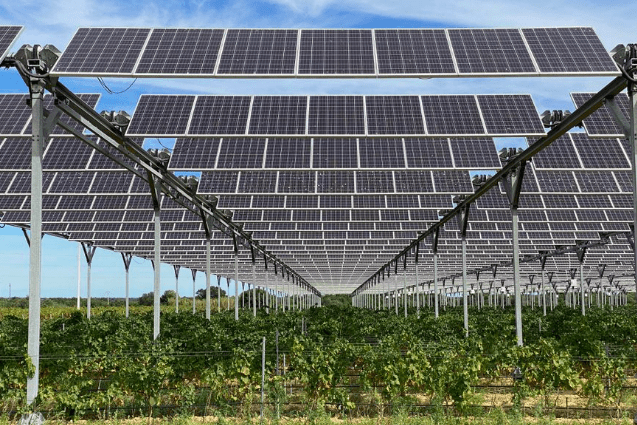The U.S. Department of Agriculture (USDA) and Virginia Tech have unveiled groundbreaking research shedding light on the promising future of agriculture.
In a collaborative effort, the U.S. Department of Agriculture (USDA) and Virginia Tech have unveiled groundbreaking research shedding light on the promising future of agriculture. The study suggests that advanced technologies like controlled environment agriculture and agrivoltaics could revolutionize farming.
Controlled environment agriculture encompasses various enclosed or indoor systems such as greenhouses, vertical farms, and hydroponics. These innovative methods utilize horticultural and engineering techniques, surpassing traditional soil-based outdoor production. Agrivoltaics, on the other hand, involve the dual utilization of land for farming and solar photovoltaic energy generation.
Published by a team led by Erik Dohlman, alongside economists Karen Maguire, Wilma Davis, Megan Husby, and Catharine Weber from the USDA’s Economic Research Service, the research underscores the potential benefits of these methods.
According to the findings, they could significantly boost yields, enhance nutritional quality, improve access to local produce, and ensure year-round availability of fresh food, surpassing conventional large-scale outdoor farming.
Despite facing technological and economic challenges, these systems mark a significant advancement in the U.S. agricultural sector’s ongoing evolution.
John Bovay, an assistant professor at Virginia Tech’s Department of Agricultural and Applied Economics, emphasized the importance of understanding emerging technologies like hydroponics and vertical farming. He noted their exponential growth in recent decades and the transformative impact they could have on consumer experiences and economic dynamics, particularly for traditional soil-based farmers.
While acknowledging that these technologies may not immediately replace conventional methods, the researchers highlight their potential to mitigate risks associated with extreme weather conditions and harness renewable energy through agrivoltaic systems.
Key findings from the research include:
- The number of individually controlled environment agriculture operations in the U.S. more than doubled to nearly 3,000 between 2009 and 2019.
- Controlled environment crop production witnessed a 56 percent increase over the same period, from 502 million pounds to 786 million pounds.
- Hydroponics played a significant role in producing over 60 percent of tomatoes, cucumbers, and lettuce in controlled environment agriculture in 2019.
- As of 2021, approximately 300 agrivoltaics sites were identified, with most being solar farms planted with pollinator-friendly vegetation. Some sites integrated solar panels with grazing areas for sheep, while a few were co-located with specialty crop production like blueberries.
These findings underscore the transformative potential of advanced agricultural technologies in meeting future food demands, enhancing sustainability, and reshaping farming practices. As the world grapples with challenges such as climate change and food security, innovative approaches like controlled environment agriculture and agrivoltaics offer promising solutions for a resilient and sustainable agricultural future.
